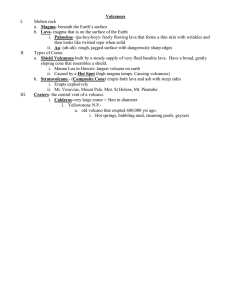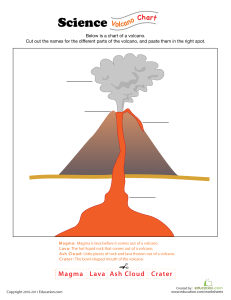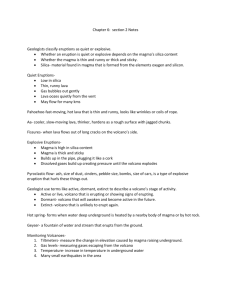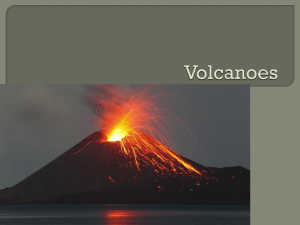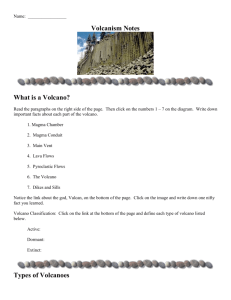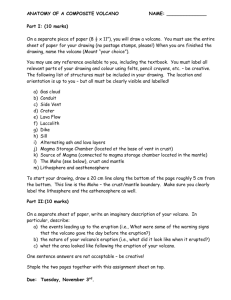exam study sheet
advertisement
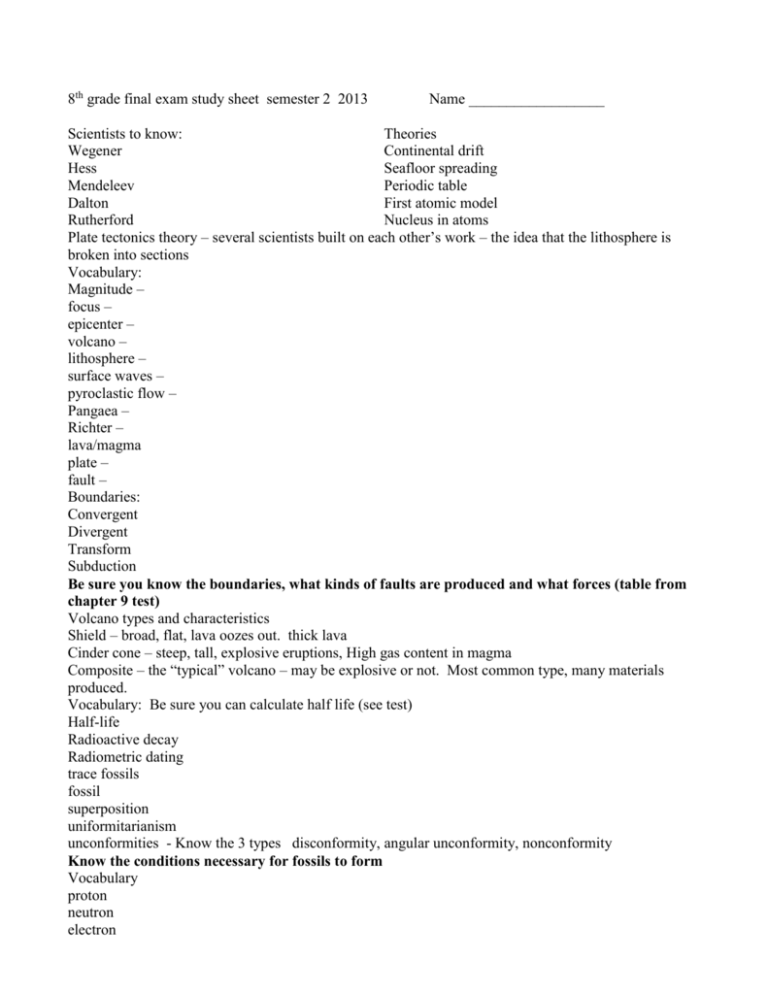
8th grade final exam study sheet semester 2 2013 Name __________________ Scientists to know: Theories Wegener Continental drift Hess Seafloor spreading Mendeleev Periodic table Dalton First atomic model Rutherford Nucleus in atoms Plate tectonics theory – several scientists built on each other’s work – the idea that the lithosphere is broken into sections Vocabulary: Magnitude – focus – epicenter – volcano – lithosphere – surface waves – pyroclastic flow – Pangaea – Richter – lava/magma plate – fault – Boundaries: Convergent Divergent Transform Subduction Be sure you know the boundaries, what kinds of faults are produced and what forces (table from chapter 9 test) Volcano types and characteristics Shield – broad, flat, lava oozes out. thick lava Cinder cone – steep, tall, explosive eruptions, High gas content in magma Composite – the “typical” volcano – may be explosive or not. Most common type, many materials produced. Vocabulary: Be sure you can calculate half life (see test) Half-life Radioactive decay Radiometric dating trace fossils fossil superposition uniformitarianism unconformities - Know the 3 types disconformity, angular unconformity, nonconformity Know the conditions necessary for fossils to form Vocabulary proton neutron electron atomic number mass number isotopes element transmutation alpha particle beta particle Be able to calculate number of protons, electrons and neutrons if you are given atomic number and mass number. Know that in neutral atoms, positive and negative charges have to be equal Vocabulary Metals Metalloids Non metals group valence period covalent ionic ion catalyst exothermic endothermic products reactants Collisions between molecules speeds up a reaction. Also greater temperature increases reaction speed. Be able to give an example of physical change, chemical change, and evidence that a chemical reaction has taken place. Be able to draw a Bohr and Lewis diagram of an atom Practice balancing equations. Vocabulary acceleration momentum mass velocity inertia speed friction displacement HAVE your calculator and formula card (make a new one and include Newton’s second law) You will have problems to solve involving distance, displacement, acceleration, speed, and momentum Vocabulary force net force gravity friction balanced and unbalanced forces Newton’s first, second, and third laws

